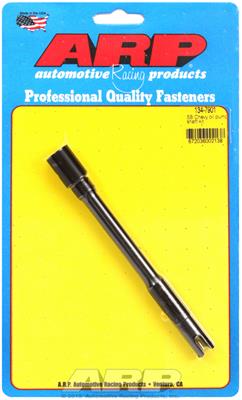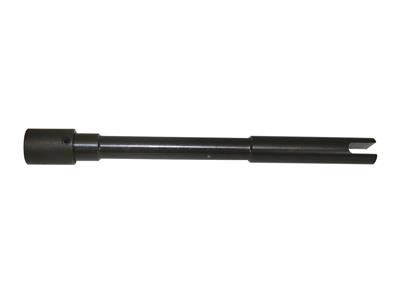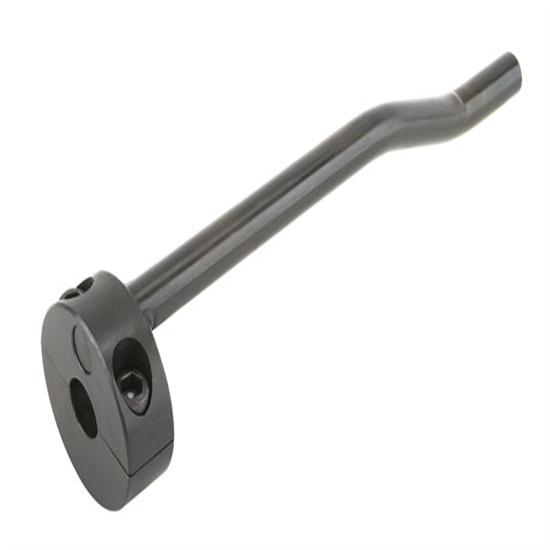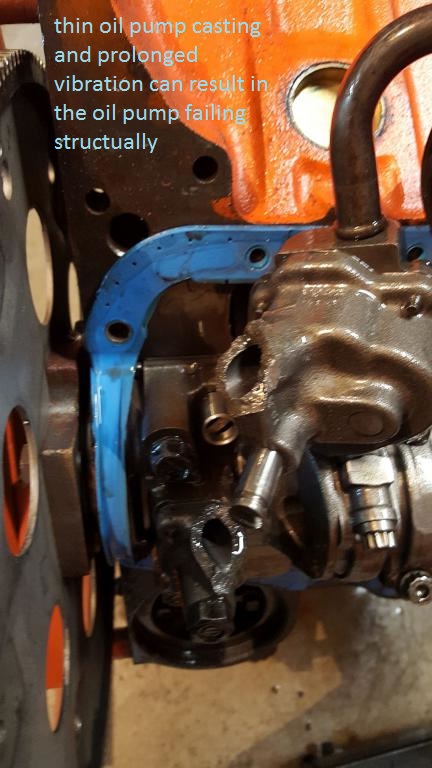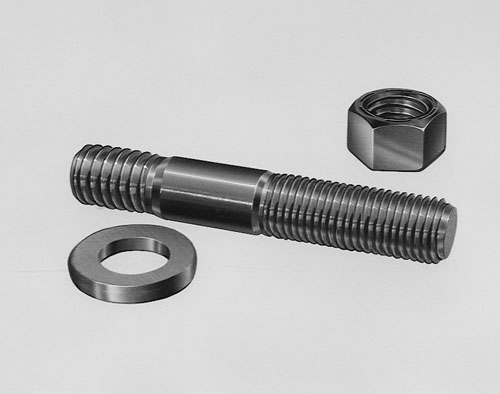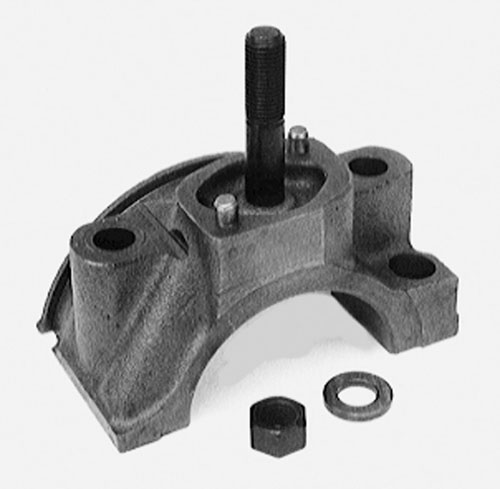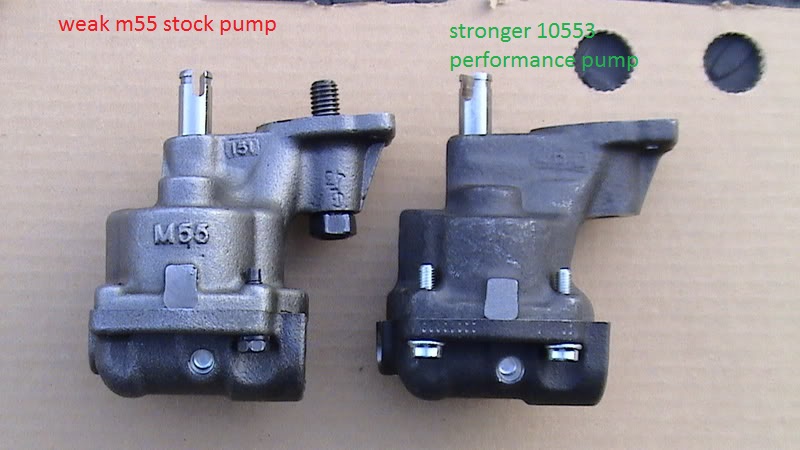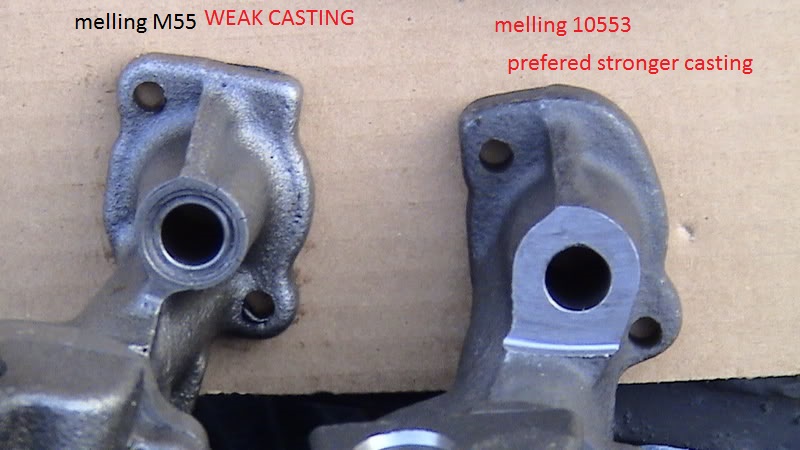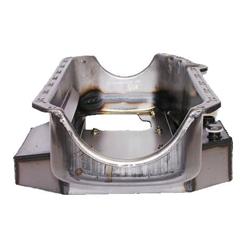I just got asked
" I just installed a new oil pump and have no oil pressure over about 1500rpm. but IM pulling about 24 psi at IDLE?? whats wrong GRUMPY"
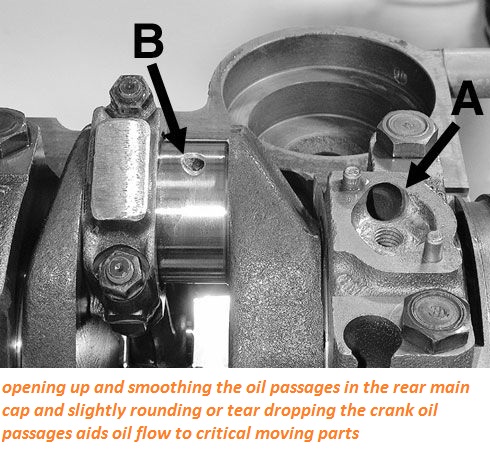

http://www.melling.com/Aftermarket/High ... Pumps.aspx

adding "ST" to the end of the existing melling part number denotes the helical gear set option
THAT'S a very common problem, keep in mind OIL PRESSURE in an ENGINE is a MEASURE of the RESISTANCE to OIL FLOW restrict the oil pumps out flow, and pressure in the oil passages tends to rise, restrict the oil pumps intake feed and pressure tends to drop, off and the problems easily avoided or corrected in most cases,the repair solutions fairly simple, the oil pick-up needs to be mounted between 3/8-1/2" from the oil pan floor.
MOUNT THE PUMPS INTAKE PICK-UP,TOO CLOSE TOO THE PAN FLOOR AND YOU'LL GET THE RESULTS YOUR SEEING! the standard oil pump bady is about 3/8"-1/2" shorter than the high volume pump with its longer gears, if you put the high volume pump and pick-up into the oil pan without verifying the pick-up to pan floor clearance that places the pick-up much closer to the oil pan floor, THE reason is that at low rpms the pumps pick-up can feed enough oil but speed up the pump, the flow requirement goes up and since the pick-up can,t supply the pumps needs, it restricted and oil pressure falls rapidly to near ZERO ..until the rpms drop back to the point where the pick-up CAN supply the pumps needs
read through the link and sub links
http://garage.grumpysperformance.co...vs-standard-chevy-oil-pumps.15902/#post-95621
pumping the pan drys a myth in a properly set up chevy, hot oil drains from the upper engine faster than its pumped up there,the highest volume of oil flow exits the bearings,IN THE LOWER ENGINE AREAS and in a properly set up engine its rapidly swept into the sump, aided by a windage screen
here are many oil leakage points(100) in a standard Chevy engine.
16 lifter to push rod points
16 push rod to rocker arm points
32 lifter bores 16 x 2 ends
10 main bearing edges
9 cam bearing edges
16 rod bearing edges
2 distributor shaft leaks
1 distributor shaft to shim above the cam gear(some engines that have an oil pressure feed distributor shaft bearing
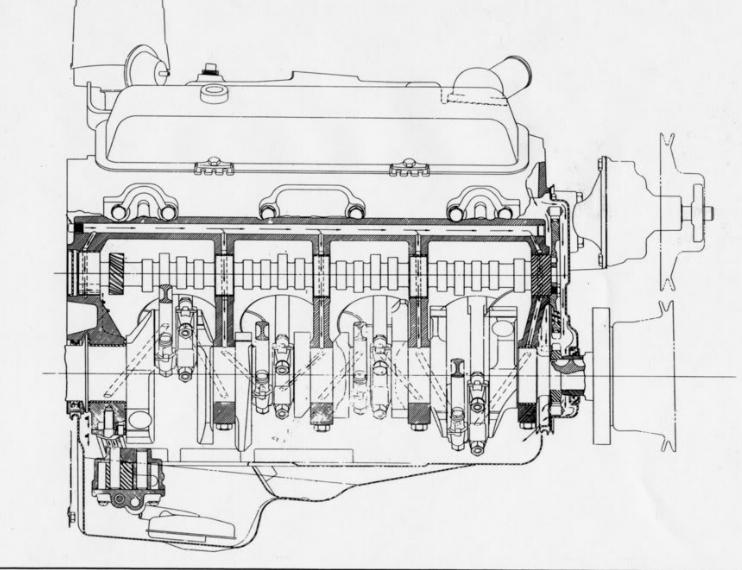

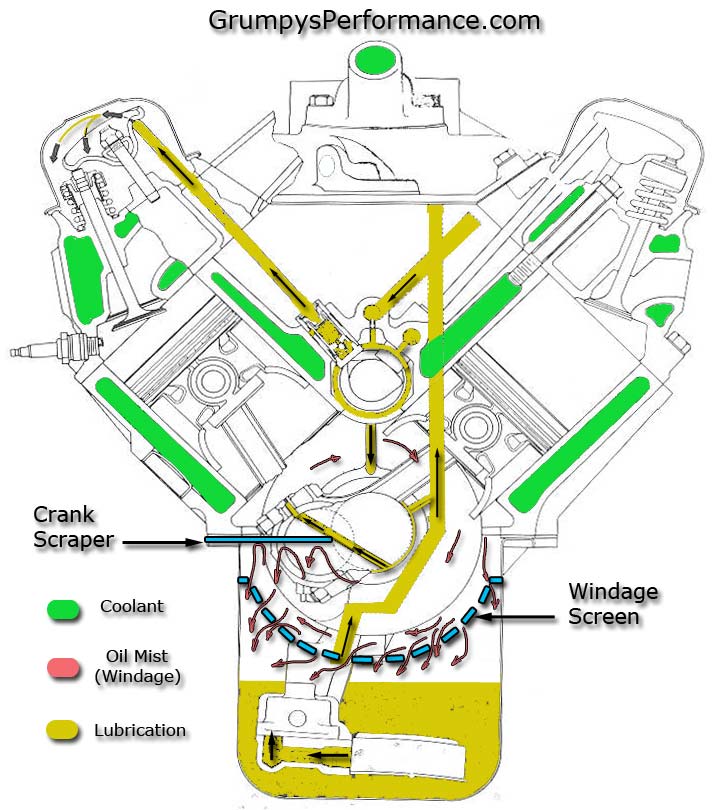
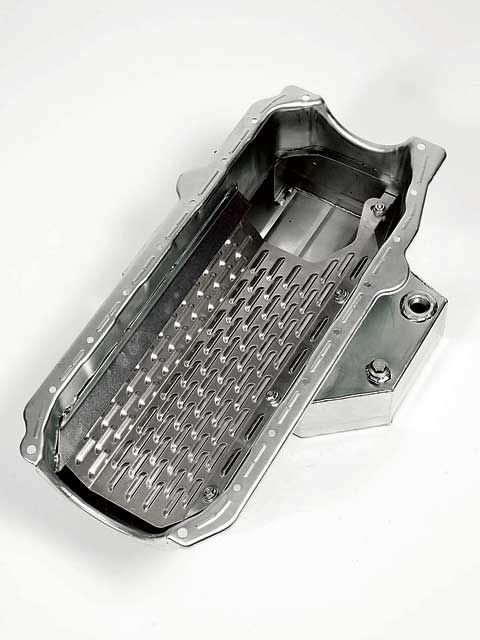
HERES MORE OIL INFO
small block oil pumps generally but not in all cases have 5/8" pickup tube diam. while BIG blocks generally but not in all cases have 3/4" pickup tube diam.
keep in mind that in many cases the big block pump can be bolted onto and used on the small block engine (a common mod) and that you need to carefully check clearances on the oil pump,oil pump drive shaft to distributor length and pan to pickup clearances in all oil pump installations
BTW if you have a sudden drop in oil pressure on any engine with no other symptoms, you might want to replace the oil filter and check oil levels before you panic as its not uncommon for some brands of oil filters to fail internally
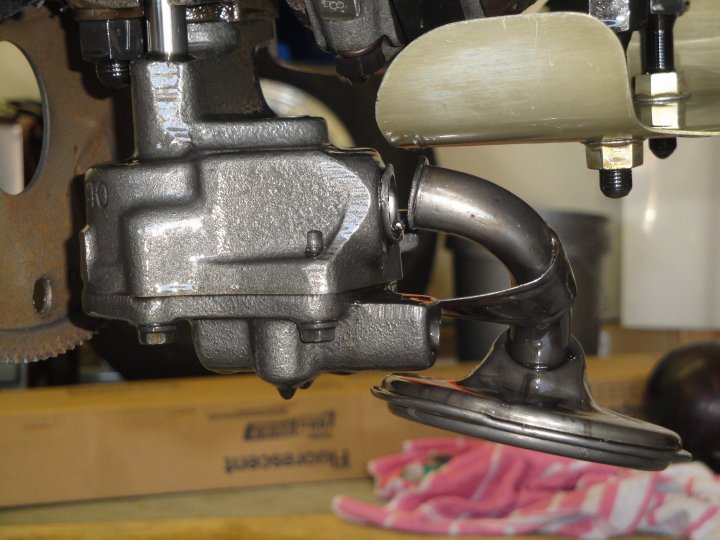
broken , or improperly installed oil pump pick-ups can cause several major oil pressure issues
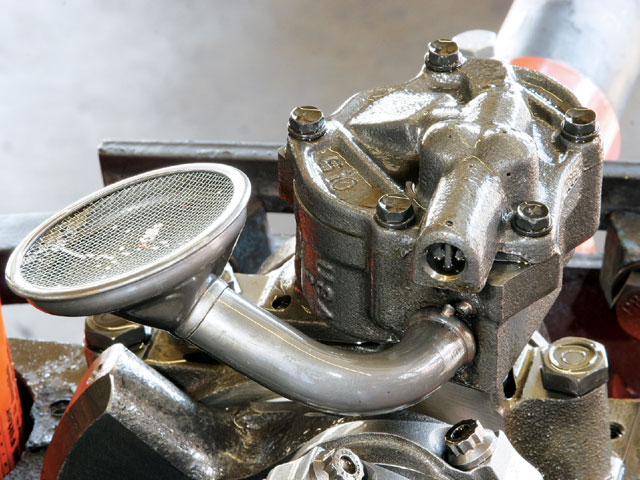
ITS always a good idea to verify the oil pan floor to oil pump pick-up clearance and to braze the pick-up to the oil pump, to reduce the potential for it to come loose.
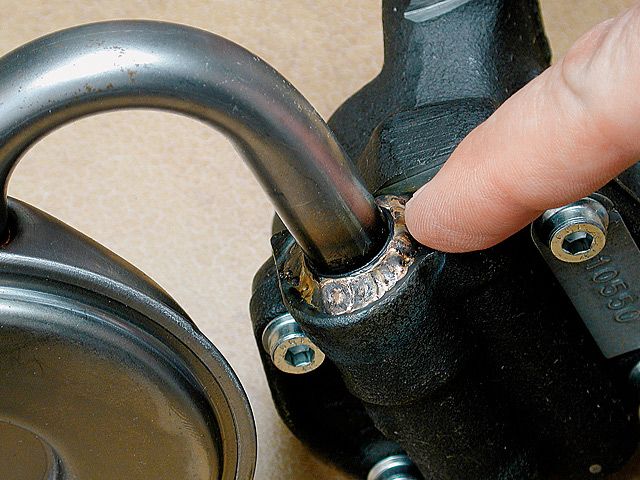
yes you can MIG ,TIG or TORCH WELD the pick-up but I found BRAZING works the best and is less likely to warp or crack the pump or pick-up
"how in hell do those twisty, safety wire pliers work?"
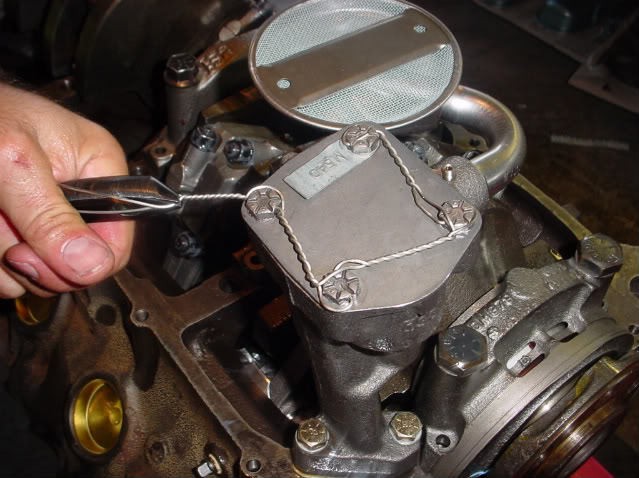
well a video should be helpful here! Id also point out that you can buy the wire in several diameters and the thicker sizes are far more difficult to use, home depot sells the 22 gauge and 18 gauge, the 22-24 gauge is what youll use far more commonly, as its much easier to use,both stainless (PREFERED) and galvanized are used, and will work on 95% of the applications on a car your likely to use.
using anti-seize paste on bolt or stud threads helps prevent future problems
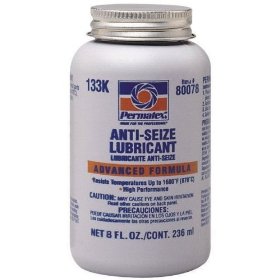
using safety wire pliers
braze the pick-up tube to the pump body so the pick up is 3/8" MINIMUM, 1/2" maximum from the oil pan floor and use a large lump of MODELING CLAY (every mechanic should have some its great for checking clearances)on the pickup then install the pan temp. with no gasket and remove to measure the thickness of the clay
your local arts/craft store sells it in 1 lb blocks I usually use bright blue or black but suit your self, a digital caliper or even a ruler will get you the thickness measurement your looking for)
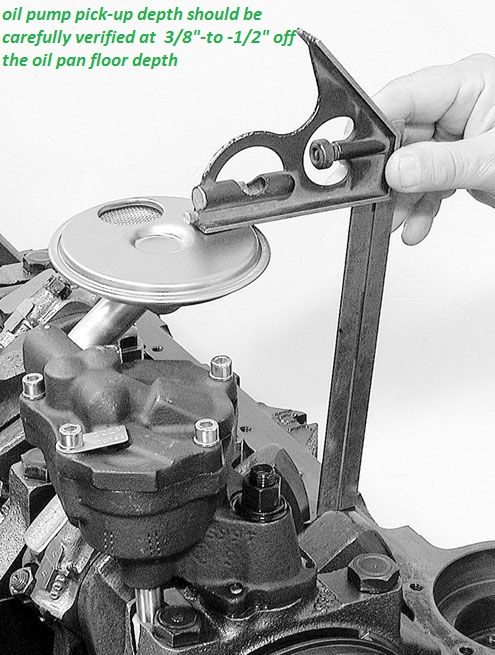
http://store.yahoo.com/teacher-parent-store/modelingclay.html
https://www.hotrod.com/articles/ccrp-0911-small-block-chevy-oil-pumps/
http://www.guildcraftinc.com/ProductInfo.aspx?productid=102-500
http://www.speedwaymotors.com/Oil-Pump- ... GoogleBase
http://www.mellingengine.com/TechnicalS ... etins.aspx
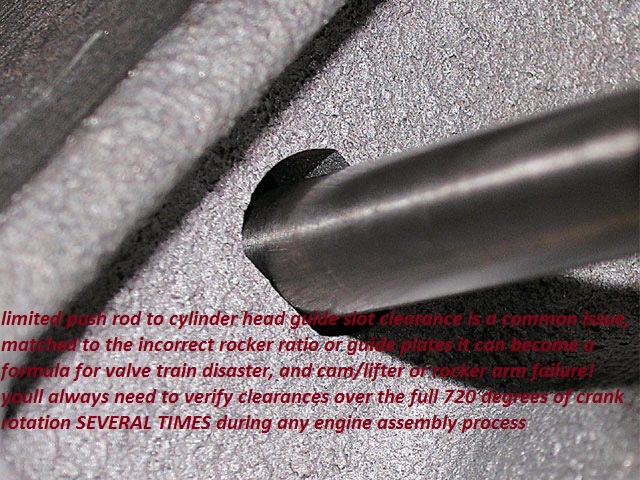
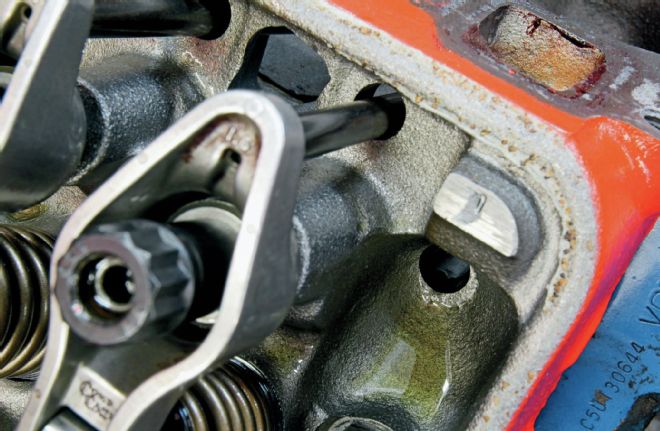
REMEMBER TO CAREFULLY CHECK THE PUSH ROD TOO CYLINDER HEAD GUIDE SLOT AND CYLINDER HEAD CASTING CLEARANCES,IF THE PUSH ROD BINDS IT MAY CAUSE A LOSS OF OIL FLOW THROUGH THE PUSH ROD, FROM LIFTER TOO ROCKER OR THE LIFTER TO WEAR RAPIDLY
checking all valve train clearance issues in mandatory
once its correctly positioned ,remove the bye pass spring and gears from the oil pump,and have the pick-up brazed or welded to the pump body, then after it SLOWLY AIR cools (DON,T DROP IT IN WATER LET IT AIR COOL)replace the bypass spring and gears, lube the pump,with assembly lube on the gears, check the clearances, check clearances again! and install! just be damn sure its brazed or welded in the correct location as that 3/8"-1/2" is critical to good oil volume feeding the pick-up
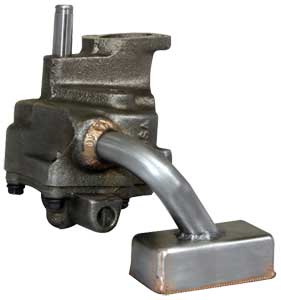
use a good 7-8 quart baffled oil pan
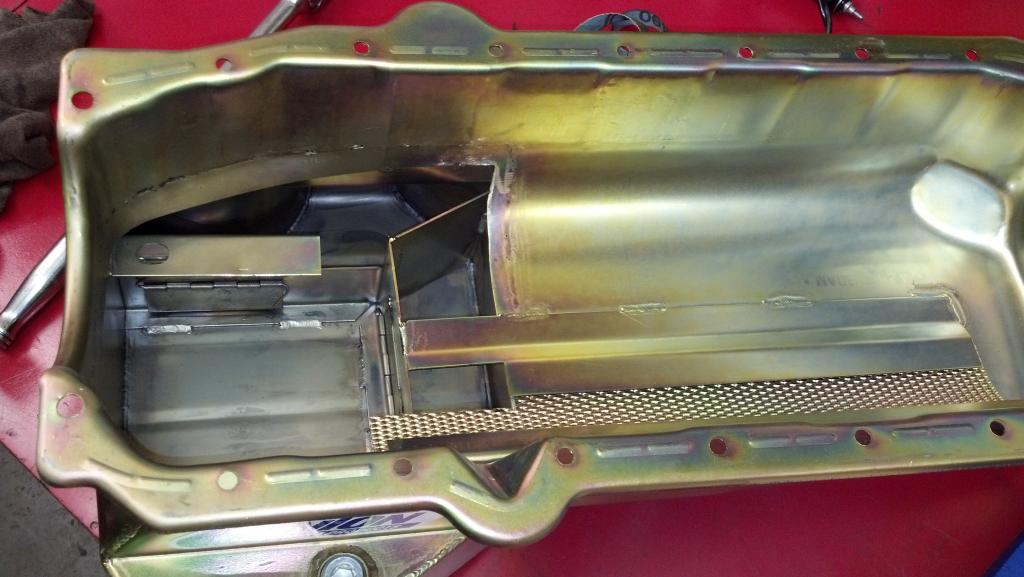
http://users.erols.com/jyavins/solder.htm
http://www.tinmantech.com/html/faq_brazing_versus_soldering.html
http://www.epemag.wimborne.co.uk/solderfaq.htm
silver soldering is basically lower temp brazing , the soldering metal flows over the surface and into micro cracks in the surface of the other metal forming a almost un removeable bond to the other metals surface it allows you to stick iron to steel or brass to steel, it works more or less like normal solder does on copper but at higher temps and has a much stronger grip in addition too working on iron and steel
I vastly prefer the 5 BOLT BBC style pumps with the 12 tooth gears and thier larger 3/4" pick-up VS the small 4 bolt pumps with thier 5/8" pick-ups and 7 tooth gears. the oil flow is both higher pressure at low rpms and smoother in pulse pressure spread,no! you don,t need it on a non-race combo, or even on some race combos but its nice to have and I willingly will loose a few hp pumping oil for better engine lubrication
most common question I get? "will a high volume oil pump help or hurt my engine?" followed by some guy saying
"If you're using a stock capacity pan, the high volume oil pump could actually suck out all the oil from the pan before it is drained back in, thus creating bad, bad problems"
absolutely proven false bye SMOKE YUNICK with HIGH SPEED PHOTOGRAPHY and CLEAR WINDOWS IN ROCKER COVERS AND OIL PAN but what can and does happen is the oil pump pickup can and does get mounted or moved too high or low in the oil pan,restricting access to the oil supply, sometimes the pickup comes loose or under hard acceleration or braking the oil in a non-baffled pan can rush away from the pickup under (G) forces, this is not pumping the pan dry, a baffled pan with a windage screen with the same oil supply volume would work perfectly
ok lets look at a few things, pressure is the result of a resistance to flow , no matter how much oil is put out by the oil pump there is almost no pressure unless there is a resistance to that oil flow and the main resistance is from oil trying to flow through the bearing surface clearances and once the pumps output pressure exceeds the engines ability to accept the oi lflow at the max pressure the oil return system/bypass spring allows the oil circles back through the pump ,now the amount of oil flow necessary to reach the furthest parts in the engine from the oil pump does not go up in direct relation to rpm, but it instead increases with rpm at a steadily increasing rate that increases faster than the engine rpm due to centrifugal force draining the oil from the rods as they swing faster and faster since energy increases with the square of the velocity the rate of oil use goes up quite a bit faster due to the greatly increased (G-FORCES) pulling oil from the rod bearings over 5000rpm going to 8000rpm than the rate of oil flow increases from 2000 rpm to 5000rpm (the same 3000rpm spread) and remember the often stated (10 lbs per 1000rpm)needs to be measured at the furthest rod and main bearing from the pump not at the pump itself, next lets look at the oil flow itself, you have about 5-6 quarts in an average small block now the valve covers never get and hold more than about 1/3 to 2/3 of a quart each even at 8000 rpm (high speed photography by SMOKEY YUNICK doing stock car engine research with clear plastic valve covers prove that from what Ive read) there's about 1 quart in the lifter gallery at max and there's about 1 quart in the filter and in the oil passages in the block, that leaves at least 2 quarts in the pan at all times and for those that want to tell me about oil wrapped around the crankshaft at high rpms try squirting oil on a spinning surface doing even 2000rpm (yes that's right its thrown off as fast as it hits by centrifugal force, yes its possible for the crankshaft WITHOUT A WINDAGE SCREEN to keep acting like a propeller and pulling oil around with it in the crank case but that's what the wrap around style milodon type windage screen is designed to stop)the only way to run out of oil is to start with less than 4 quarts or to plug the oil return passages in the lifter gallery with sludge or gasket material! now add a good windage tray and a crank scrapper and almost all the oil is returned to the sump as it enters the area of the spinning crankshaft! forming a more or less endless supply to the oil pump, BTW almost all pro teams now use DRY SUMP SYSTEMS WITH POSITIVE DISPLACEMENT Gyrators PUMPS that are 3,4,or 5 stage pumps each section of which has more volume than a standard volume oil pump because its been found total oil control is necessary at high rpms to keep bearings cool and lubed
NOW I POSTED THIS BEFORE BUT IT Needs REPEATING
ok look at it this way,what your trying to do here is keep an pressurized oil film on the surface of all the bearings to lube and cool them and have enough oil spraying from the rod and main bearing clearances to lube the cam and cylinder walls/rings. now a standard pump does a good job up to 5000rpm and 400 hp but above 6000rpm and 400hp the bearings are under more stress and need more oil flow to cool and because the pressure on the bearings is greater you need higher pressures to maintain that oil film.lets look at the flow versus pressure curve. keep this in mind, good oil flow volume across the bearing surfaces to cool and lubricate them and to provide a boundary layer between the metal surfaces is more important than the pressure reached at all rpms. since oil is a liquid its non-compressible and flow will increase with rpm up to the point where the bypass circuit starts to re-route the excess flow at the point were the pressure exceeds the bypass spring pressure. but the volume will be equal to the pumps sweep volume times the rpm of the pump, since the high volume pump has a sweep volume 1.3-1.5 times the standard pump volume it will push 1.3-1.5 times the volume of oil up to the bypass circuit cut in point,that means that since the engine bearings leakage rate increases faster as the rpms increase because the clearances don,t change but the bleed off rate does that the amount of oil and the pressure that it is under will increase faster and reach the bypass circuit pressure faster with the high volume pump. the advantage here is that the metal parts MUST be floated on that oil film to keep the metal parts from touching/wearing and the more leakage points the oil flows by the less the volume of oil that's available for each leakage point beyond it and as the oil heats up it becomes easier to push through the clearances.now as the rpms and cylinder pressures increase in your goal to add power the loads trying to squeeze that oil out of those clearances also increase. ALL mods that increase power either increase rpms,cylinder pressures or reduce friction or mechanical losses. there are many oil leakage points(100) in a standard Chevy engine.
16 lifter to push rod points
16 push-rod to rocker arm points
32 lifter bores 16 x 2 ends
10 main bearing edges
9 cam bearing edges
16 rod bearing edges
2 distributor shaft leaks
1 distributor shaft to shim above the cam gear(some engines that have an oil pressure feed distributor shaft bearing.)
so the more oil volume the better.chevy did an excellent job in the design but as the stresses increase the cooling volume of the extra oil available from the larger pump helps to prevent lubrication delivery failure, do you need a better pump below 5000rpm or 400hp (hell no! at that level the stock pump works fine) above that level the extra oil will definitely help possiable deficient oil flow and bearing cooling and a simple increase in pressure does not provide a big increase in volume that may be necessary to keep that oil film in the correct places at the correct volume at all times.the stock system was designed for a 265cid engine in a passenger car turning a max of about 6000 rpm but only having the stress of under 300hp transmitted to the bearings, I'm sure the original designers never thought that the sbc or bbc would someday be asked to on occasion hold up to 450-800hp and 6000-8000 rpm. nor did they foresee valve springs that placed sometimes as much as 500lbs and up loads on the lifters and the use of over 9 to 1 compression ratios in the original design so the oil volumes and pressures necessary to cool those valve springs and bearings at those stress levels were never taken into account for that either , the stock pump works but was never designed for the loads and rpms that a modern engine hotrodded to over 450hp sees
the standard volume pump gears are about 1.2" long the high volume pump gears are about 1.5 inches long (depends on manufacturer)
here is the descriptions right from chevy
12555884
SBC Oil Pump, High Pressure Z28/LT1. Production high-pressure oil pump with 1.20" gears.Will produce 60-70 psi oil pressure. Does not include screen. The pickup tube diam. is 5/8" for this pump.
62.17
14044872
SBC Oil Pump, High-Volume. This high-volume pump has1.50" long gears.It has approximately 25% more capacity than a production pump at standard pressure. Does not include screen.
and yes I commonly build small blocks using bbc oil pumps like the ls7 pump, it has 1.3" gears but they are bigger in diam. and have 12 not 7 teeth like the small block pumps (many standard sbc pickups use 5/8" diam. pickups) (the ls7 pump is best used on 8qt-9qt road racing oil pans as the larger 3/4" pickup flows lots of oil for extreme high rpm engines with a multi baffled pan using windage screens, scrappers and cut outs for extreme (G) loads where a dry sump can,t be used or cost makes you stick to a wet sump pan. these LS7 pumps don't fit most sbc oil pans so your stuck using the high volume sbc oil pump if your not using a true racing 8-9 qt style oil pan in some cases
since I just got an E-MAIL about what mods are necessary or at least a good idea when running a high volume oil pump, and concern over possible extra gear wear caused by the slightly and I do mean slightly increased pressure on the gears, guys I'm getting the idea here that most of you are not aware that your normally suppose to cut a .060 wide x .005-9 deep groove in the lower band on the distributor housing so that extra oil sprays constantly on the contact point between the cam and distributor gears and that a ARP style drive shaft with a steel collar to hold the driveshaft alignment on true center is mandatory for long high rpm use. look at this picture:

The grouve is cut under the bottom (O)ring in the band just above the gear (look at the picture above, (BTW the pic shows a smaller grouve than ideal)) and in line with the gears so that oil sprays on the gear contact points at all times, this is a mod most old time racers know about and use, but Im getting the idea the new guys have not picked up on it! (those two bands form the side of an oil passage in the block and the distributor shaft seals that passage, cutting the groove sends a spray of high pressure oil onto the contact point at all times, if you dont cut the grouve your relieing on returning zero pressure oil flowing down the rear lifter gallery drain holes to lube the gears
BTW the other way to do this is to groove the block in the distributors lower band area as this keeps the location of the oil jet constant as the distributor is turned, for a full contact spray on the gears so I generally do BOTH
btw
heres more OIL info
http://motorcycleinfo.calsci.com/Oils1.html
http://minimopar.knizefamily.net/oilfilterstudy.html
http://www.unofficialbmw.com/all/misc/all_oilfaq.html
http://www.bobistheoilguy.com/
http://www.babcox.com/editorial/ar/ar10180.htm
http://www.melling.com/support/bulletins/default.asp
http://www.melling.com/select/oil_pumps_gm_chevy_small_block.asp
now think it thru,
(1)pressure is the resistance to oil flow
(2) the high volume pump can push about 25% more oil
(3) the oil pump bye-pass circuit limits the max pressure in either size pump to about 65lbs-75 lbs MAXIMUM before it BYE-PASSES all additional oil volume
(4) the engine can accept and use only the max flow volume that the engine passages can flow at the max pressure the pump provides , at any point less than max pressure the passages can flow only what the pressure and volume provided by the pump supplies
(5)if the bearing clearances can flow more than the pump provides in volume and pressure at any rpm level the film of cooling oil that provides a cushion between the bearing surfaces are at risk of not being supported and separated by that cushion of oil
(6) now since the sweep volume is greater with the high volume pump it will reach that bye-pass circuits max pressure at about 25% lower rpms and supply a POTENTIALLY higher volume of oil to the supply passages/bearings
(7)SO... all a high volume pump does is provide the maximum oil flow the engine can use up to the max pressure allowed by the bye-pass circuit at a 25% lower rpm level if the system can reach max pressure, but it also supplies 25% more oil at every rpm level below that point to provide additional cooling and protection for the engine. and if the engine can flow more than the stock pump can provide the high volume pump helps fill the need faster
(8)oil flow through the bearing clearances INCREASES at a faster rate as the rpms increase
(9) in most engines the oil flow can be provided by the stock pump IF the clearances are close to stock AND THE RPM LEVELS ARE KEPT IN ABOUT THE idle-6000rpm range but if rpm levels exceed ABOUT 6000rpm,or if bearing loads greatly exceed the stock hp levels, or the clearances are greater than stock, the high voluum pump is a good idea , simply because it potentially provides that extra volume of oil.
if you choose to install a high volume oil pump you should SERIOUSLY consider the fact that the pump is only a small part of the whole oil system,(which includes a high volume BAFFLED oil pan (7qts or more is ideal) and a windage screen, which is necessary to quickly return that extra oil to the sump, and doing the distributor mod is a big help, as it prevents any potential for cam/gear wear (something already almost non-existent with synthetic oil and the proper distributor gear material.)
bye-pass circuit spring
the pressure your engine sees is due to the resistance to oil flow and that's the result of the engine clearances, oil viscosity, temp. and the oil pumps sweep volume, the spring only controls the opening pressure of the bye-pass circuit there's absolutely no difference in pressure until the pump overcomes the spring in the bye-pass circuit, the lighter spring opens the bye pass at about 60 -65 psi, the stiffer spring opens the circuit at about 65-70 psi, so with either spring there's absolutely no change in oil pressure below 60 psi, only the upper limit changes
oil pressure is a measure of resistance to oil flow,and should be carefully watched during the break-in process, as oil temp increases viscosity thins out and resistance to oil flow thru bearing clearances NORMALLY DROPS. that's not a problem, its EXPECTED, the only problem is if it DROPS too low, oil temp/pressure readings when cold usually are significantly higher than oil temp/pressure once its up to temp.(coolant about 210F oil about 190F) if the oil pressure is over 20-25 psi on a newly rebuilt engine that's up to operating temp that's generally fine, once its got a few miles on the engine clearances tend to increase a bit, resulting in a minor reduction in pressure , As long as you've got about 20 psi at idle on a fairly new engine your doing fine.
oil pressure should be a minimum of about 10 psi per 1000rpm but ideally no lower than about 15-20 psi at idle, pressure above 65psi does not hurt, but absorbs some hp, but it does not help the bearings much either
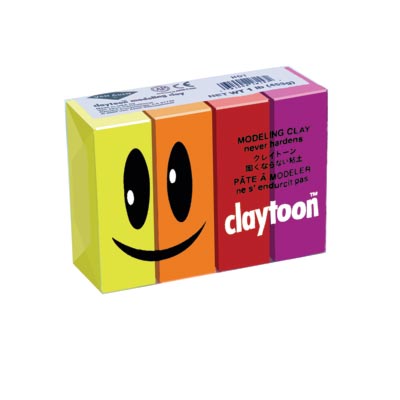
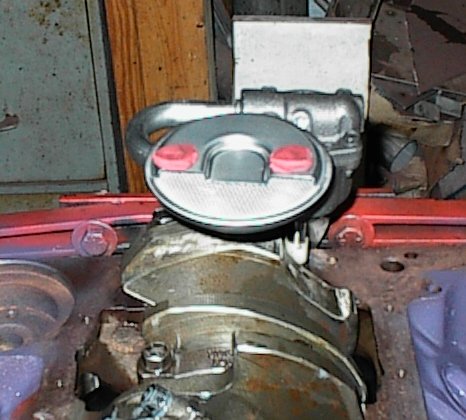

almost every mechanics tool box needs a few basic measuring tools and supplies

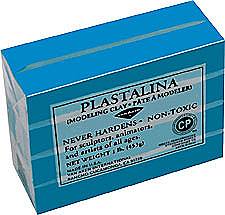 https://www.amazon.com/Claytoon-Set...d=1466872286&sr=8-17&keywords=plastilina+clay
https://www.amazon.com/Claytoon-Set...d=1466872286&sr=8-17&keywords=plastilina+clay
http://www.utrechtart.com/Plastalin...currency=USD&gclid=CN3G75zOw80CFQgaaQodKbgFjA
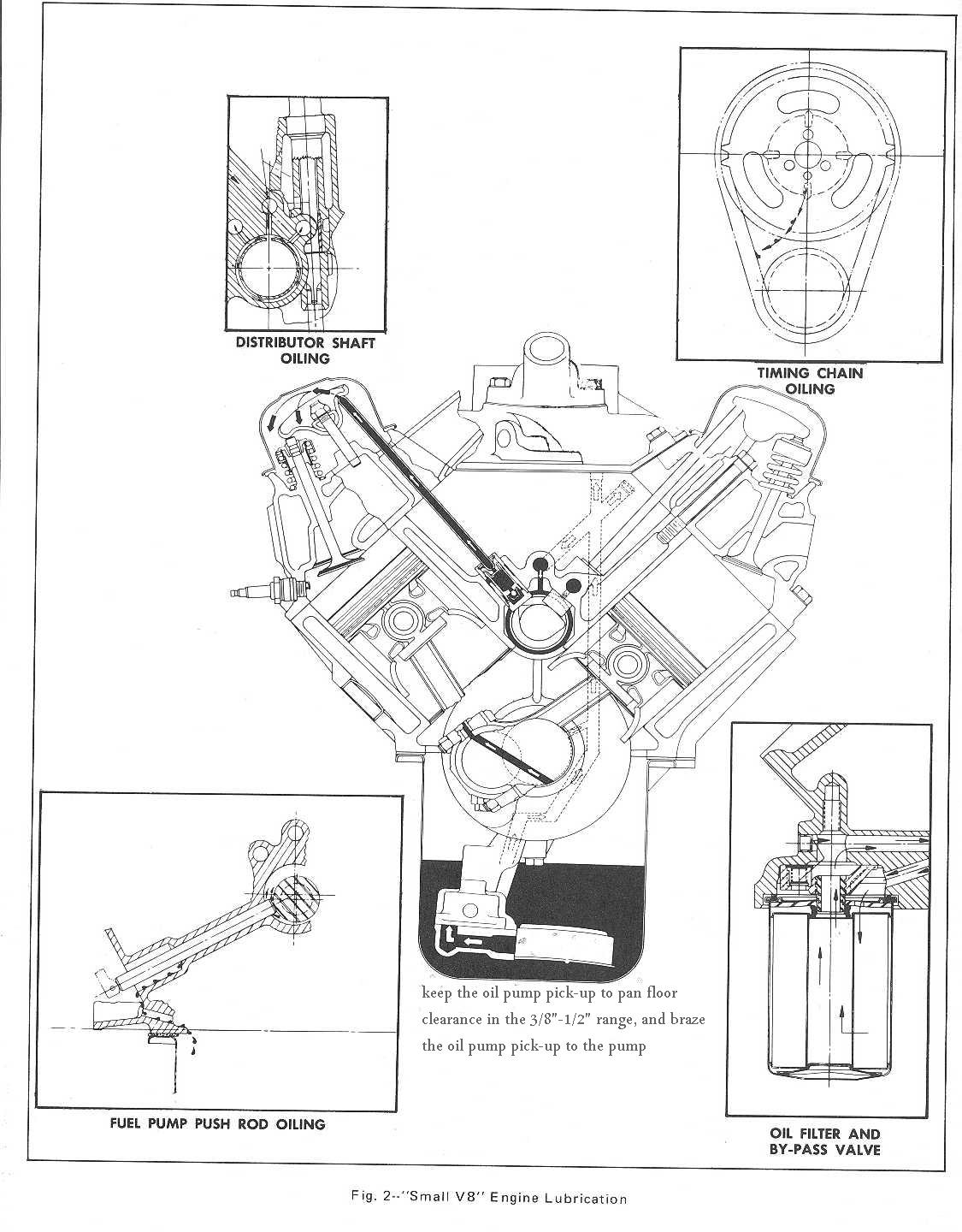
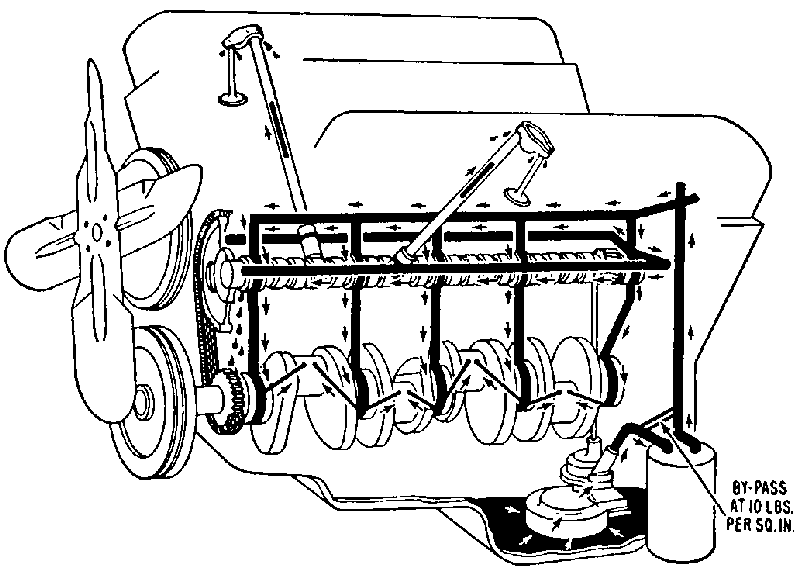
most oil pressure and fuel pressure gauges now are electric and use a sensor and wires to transmit the sensor data to the gauge , the last thing you want is a broken line allowing fuel or oil under pressure to pass through the fire wall, in fact most racing rules forbid that oilder manual type of gauge use.
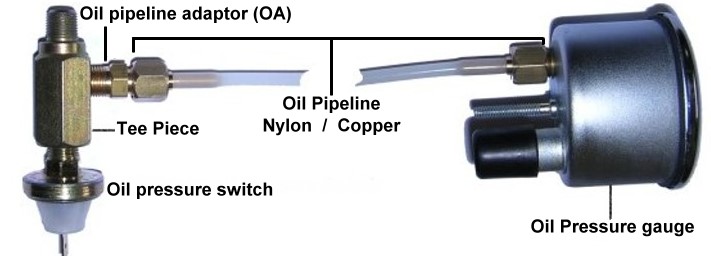
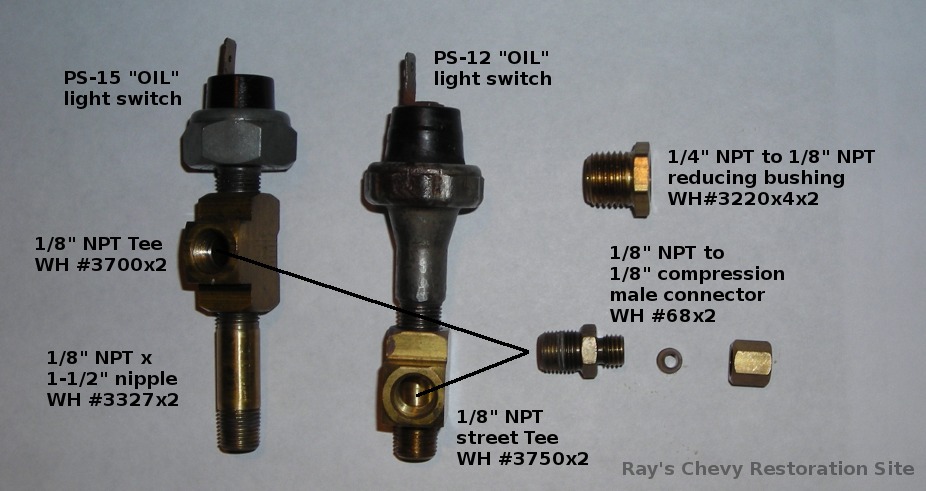
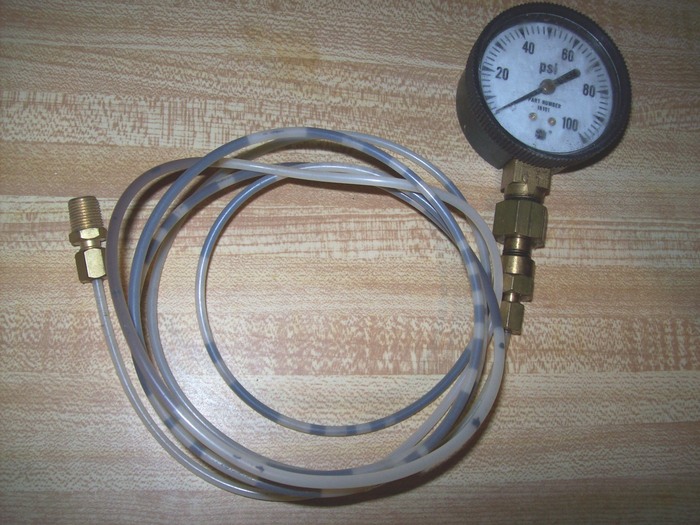
If your manual oil pressure gauge is stuck in one position ,check to verify the indicator needle is not bent, and you might also want to try spraying some carb cleaner solvent into the tube feeding oil pressure into the gauge then repeatedly applying high air pressure from your compressor,intermittently, and repeatedly, and removing the air pressure to cycle the solvent fluid in the tube to allow it to work its way up too the gauge to dissolve any sludge, in many case the tube has a fitting on the back of the gauge that can be temporarily disconnected so you can use solvent and air pressure to check the tube is clear and get easy access too the gauge internals.
obviously if the tubes blocked it needs to be cleared or replaced, if the gauge is defective, its probably cheaper to replace than repair
" I just installed a new oil pump and have no oil pressure over about 1500rpm. but IM pulling about 24 psi at IDLE?? whats wrong GRUMPY"


http://www.melling.com/Aftermarket/High ... Pumps.aspx

adding "ST" to the end of the existing melling part number denotes the helical gear set option
THAT'S a very common problem, keep in mind OIL PRESSURE in an ENGINE is a MEASURE of the RESISTANCE to OIL FLOW restrict the oil pumps out flow, and pressure in the oil passages tends to rise, restrict the oil pumps intake feed and pressure tends to drop, off and the problems easily avoided or corrected in most cases,the repair solutions fairly simple, the oil pick-up needs to be mounted between 3/8-1/2" from the oil pan floor.
MOUNT THE PUMPS INTAKE PICK-UP,TOO CLOSE TOO THE PAN FLOOR AND YOU'LL GET THE RESULTS YOUR SEEING! the standard oil pump bady is about 3/8"-1/2" shorter than the high volume pump with its longer gears, if you put the high volume pump and pick-up into the oil pan without verifying the pick-up to pan floor clearance that places the pick-up much closer to the oil pan floor, THE reason is that at low rpms the pumps pick-up can feed enough oil but speed up the pump, the flow requirement goes up and since the pick-up can,t supply the pumps needs, it restricted and oil pressure falls rapidly to near ZERO ..until the rpms drop back to the point where the pick-up CAN supply the pumps needs
RICK-L IS CORRECT, SMOKEY YUNICK HAD OIL PANS WITH CLEAR PLASTIC PANELS MADE, HIGH SPEED PHOTOGRAPHY DONE AND ENGINES RUN AT HIGH RPMS FOR LONG PERIODS TO TEST THISRick_L said:...
The only way you "pump the pan dry" is to block the drainback from the heads. Which is a separate defect and can just as easily occur with a standard pump.
read through the link and sub links
http://garage.grumpysperformance.co...vs-standard-chevy-oil-pumps.15902/#post-95621
pumping the pan drys a myth in a properly set up chevy, hot oil drains from the upper engine faster than its pumped up there,the highest volume of oil flow exits the bearings,IN THE LOWER ENGINE AREAS and in a properly set up engine its rapidly swept into the sump, aided by a windage screen
here are many oil leakage points(100) in a standard Chevy engine.
16 lifter to push rod points
16 push rod to rocker arm points
32 lifter bores 16 x 2 ends
10 main bearing edges
9 cam bearing edges
16 rod bearing edges
2 distributor shaft leaks
1 distributor shaft to shim above the cam gear(some engines that have an oil pressure feed distributor shaft bearing




HERES MORE OIL INFO
small block oil pumps generally but not in all cases have 5/8" pickup tube diam. while BIG blocks generally but not in all cases have 3/4" pickup tube diam.
keep in mind that in many cases the big block pump can be bolted onto and used on the small block engine (a common mod) and that you need to carefully check clearances on the oil pump,oil pump drive shaft to distributor length and pan to pickup clearances in all oil pump installations
BTW if you have a sudden drop in oil pressure on any engine with no other symptoms, you might want to replace the oil filter and check oil levels before you panic as its not uncommon for some brands of oil filters to fail internally

broken , or improperly installed oil pump pick-ups can cause several major oil pressure issues

ITS always a good idea to verify the oil pan floor to oil pump pick-up clearance and to braze the pick-up to the oil pump, to reduce the potential for it to come loose.

yes you can MIG ,TIG or TORCH WELD the pick-up but I found BRAZING works the best and is less likely to warp or crack the pump or pick-up
"how in hell do those twisty, safety wire pliers work?"

well a video should be helpful here! Id also point out that you can buy the wire in several diameters and the thicker sizes are far more difficult to use, home depot sells the 22 gauge and 18 gauge, the 22-24 gauge is what youll use far more commonly, as its much easier to use,both stainless (PREFERED) and galvanized are used, and will work on 95% of the applications on a car your likely to use.
using anti-seize paste on bolt or stud threads helps prevent future problems

using safety wire pliers
your local arts/craft store sells it in 1 lb blocks I usually use bright blue or black but suit your self, a digital caliper or even a ruler will get you the thickness measurement your looking for)

http://store.yahoo.com/teacher-parent-store/modelingclay.html
https://www.hotrod.com/articles/ccrp-0911-small-block-chevy-oil-pumps/
http://www.guildcraftinc.com/ProductInfo.aspx?productid=102-500
http://www.speedwaymotors.com/Oil-Pump- ... GoogleBase
http://www.mellingengine.com/TechnicalS ... etins.aspx


REMEMBER TO CAREFULLY CHECK THE PUSH ROD TOO CYLINDER HEAD GUIDE SLOT AND CYLINDER HEAD CASTING CLEARANCES,IF THE PUSH ROD BINDS IT MAY CAUSE A LOSS OF OIL FLOW THROUGH THE PUSH ROD, FROM LIFTER TOO ROCKER OR THE LIFTER TO WEAR RAPIDLY
checking all valve train clearance issues in mandatory
once its correctly positioned ,remove the bye pass spring and gears from the oil pump,and have the pick-up brazed or welded to the pump body, then after it SLOWLY AIR cools (DON,T DROP IT IN WATER LET IT AIR COOL)replace the bypass spring and gears, lube the pump,with assembly lube on the gears, check the clearances, check clearances again! and install! just be damn sure its brazed or welded in the correct location as that 3/8"-1/2" is critical to good oil volume feeding the pick-up

use a good 7-8 quart baffled oil pan

http://users.erols.com/jyavins/solder.htm
http://www.tinmantech.com/html/faq_brazing_versus_soldering.html
http://www.epemag.wimborne.co.uk/solderfaq.htm
silver soldering is basically lower temp brazing , the soldering metal flows over the surface and into micro cracks in the surface of the other metal forming a almost un removeable bond to the other metals surface it allows you to stick iron to steel or brass to steel, it works more or less like normal solder does on copper but at higher temps and has a much stronger grip in addition too working on iron and steel
I vastly prefer the 5 BOLT BBC style pumps with the 12 tooth gears and thier larger 3/4" pick-up VS the small 4 bolt pumps with thier 5/8" pick-ups and 7 tooth gears. the oil flow is both higher pressure at low rpms and smoother in pulse pressure spread,no! you don,t need it on a non-race combo, or even on some race combos but its nice to have and I willingly will loose a few hp pumping oil for better engine lubrication
most common question I get? "will a high volume oil pump help or hurt my engine?" followed by some guy saying
"If you're using a stock capacity pan, the high volume oil pump could actually suck out all the oil from the pan before it is drained back in, thus creating bad, bad problems"
absolutely proven false bye SMOKE YUNICK with HIGH SPEED PHOTOGRAPHY and CLEAR WINDOWS IN ROCKER COVERS AND OIL PAN but what can and does happen is the oil pump pickup can and does get mounted or moved too high or low in the oil pan,restricting access to the oil supply, sometimes the pickup comes loose or under hard acceleration or braking the oil in a non-baffled pan can rush away from the pickup under (G) forces, this is not pumping the pan dry, a baffled pan with a windage screen with the same oil supply volume would work perfectly
ok lets look at a few things, pressure is the result of a resistance to flow , no matter how much oil is put out by the oil pump there is almost no pressure unless there is a resistance to that oil flow and the main resistance is from oil trying to flow through the bearing surface clearances and once the pumps output pressure exceeds the engines ability to accept the oi lflow at the max pressure the oil return system/bypass spring allows the oil circles back through the pump ,now the amount of oil flow necessary to reach the furthest parts in the engine from the oil pump does not go up in direct relation to rpm, but it instead increases with rpm at a steadily increasing rate that increases faster than the engine rpm due to centrifugal force draining the oil from the rods as they swing faster and faster since energy increases with the square of the velocity the rate of oil use goes up quite a bit faster due to the greatly increased (G-FORCES) pulling oil from the rod bearings over 5000rpm going to 8000rpm than the rate of oil flow increases from 2000 rpm to 5000rpm (the same 3000rpm spread) and remember the often stated (10 lbs per 1000rpm)needs to be measured at the furthest rod and main bearing from the pump not at the pump itself, next lets look at the oil flow itself, you have about 5-6 quarts in an average small block now the valve covers never get and hold more than about 1/3 to 2/3 of a quart each even at 8000 rpm (high speed photography by SMOKEY YUNICK doing stock car engine research with clear plastic valve covers prove that from what Ive read) there's about 1 quart in the lifter gallery at max and there's about 1 quart in the filter and in the oil passages in the block, that leaves at least 2 quarts in the pan at all times and for those that want to tell me about oil wrapped around the crankshaft at high rpms try squirting oil on a spinning surface doing even 2000rpm (yes that's right its thrown off as fast as it hits by centrifugal force, yes its possible for the crankshaft WITHOUT A WINDAGE SCREEN to keep acting like a propeller and pulling oil around with it in the crank case but that's what the wrap around style milodon type windage screen is designed to stop)the only way to run out of oil is to start with less than 4 quarts or to plug the oil return passages in the lifter gallery with sludge or gasket material! now add a good windage tray and a crank scrapper and almost all the oil is returned to the sump as it enters the area of the spinning crankshaft! forming a more or less endless supply to the oil pump, BTW almost all pro teams now use DRY SUMP SYSTEMS WITH POSITIVE DISPLACEMENT Gyrators PUMPS that are 3,4,or 5 stage pumps each section of which has more volume than a standard volume oil pump because its been found total oil control is necessary at high rpms to keep bearings cool and lubed
NOW I POSTED THIS BEFORE BUT IT Needs REPEATING
ok look at it this way,what your trying to do here is keep an pressurized oil film on the surface of all the bearings to lube and cool them and have enough oil spraying from the rod and main bearing clearances to lube the cam and cylinder walls/rings. now a standard pump does a good job up to 5000rpm and 400 hp but above 6000rpm and 400hp the bearings are under more stress and need more oil flow to cool and because the pressure on the bearings is greater you need higher pressures to maintain that oil film.lets look at the flow versus pressure curve. keep this in mind, good oil flow volume across the bearing surfaces to cool and lubricate them and to provide a boundary layer between the metal surfaces is more important than the pressure reached at all rpms. since oil is a liquid its non-compressible and flow will increase with rpm up to the point where the bypass circuit starts to re-route the excess flow at the point were the pressure exceeds the bypass spring pressure. but the volume will be equal to the pumps sweep volume times the rpm of the pump, since the high volume pump has a sweep volume 1.3-1.5 times the standard pump volume it will push 1.3-1.5 times the volume of oil up to the bypass circuit cut in point,that means that since the engine bearings leakage rate increases faster as the rpms increase because the clearances don,t change but the bleed off rate does that the amount of oil and the pressure that it is under will increase faster and reach the bypass circuit pressure faster with the high volume pump. the advantage here is that the metal parts MUST be floated on that oil film to keep the metal parts from touching/wearing and the more leakage points the oil flows by the less the volume of oil that's available for each leakage point beyond it and as the oil heats up it becomes easier to push through the clearances.now as the rpms and cylinder pressures increase in your goal to add power the loads trying to squeeze that oil out of those clearances also increase. ALL mods that increase power either increase rpms,cylinder pressures or reduce friction or mechanical losses. there are many oil leakage points(100) in a standard Chevy engine.
16 lifter to push rod points
16 push-rod to rocker arm points
32 lifter bores 16 x 2 ends
10 main bearing edges
9 cam bearing edges
16 rod bearing edges
2 distributor shaft leaks
1 distributor shaft to shim above the cam gear(some engines that have an oil pressure feed distributor shaft bearing.)
so the more oil volume the better.chevy did an excellent job in the design but as the stresses increase the cooling volume of the extra oil available from the larger pump helps to prevent lubrication delivery failure, do you need a better pump below 5000rpm or 400hp (hell no! at that level the stock pump works fine) above that level the extra oil will definitely help possiable deficient oil flow and bearing cooling and a simple increase in pressure does not provide a big increase in volume that may be necessary to keep that oil film in the correct places at the correct volume at all times.the stock system was designed for a 265cid engine in a passenger car turning a max of about 6000 rpm but only having the stress of under 300hp transmitted to the bearings, I'm sure the original designers never thought that the sbc or bbc would someday be asked to on occasion hold up to 450-800hp and 6000-8000 rpm. nor did they foresee valve springs that placed sometimes as much as 500lbs and up loads on the lifters and the use of over 9 to 1 compression ratios in the original design so the oil volumes and pressures necessary to cool those valve springs and bearings at those stress levels were never taken into account for that either , the stock pump works but was never designed for the loads and rpms that a modern engine hotrodded to over 450hp sees
the standard volume pump gears are about 1.2" long the high volume pump gears are about 1.5 inches long (depends on manufacturer)
here is the descriptions right from chevy
12555884
SBC Oil Pump, High Pressure Z28/LT1. Production high-pressure oil pump with 1.20" gears.Will produce 60-70 psi oil pressure. Does not include screen. The pickup tube diam. is 5/8" for this pump.
62.17
14044872
SBC Oil Pump, High-Volume. This high-volume pump has1.50" long gears.It has approximately 25% more capacity than a production pump at standard pressure. Does not include screen.
and yes I commonly build small blocks using bbc oil pumps like the ls7 pump, it has 1.3" gears but they are bigger in diam. and have 12 not 7 teeth like the small block pumps (many standard sbc pickups use 5/8" diam. pickups) (the ls7 pump is best used on 8qt-9qt road racing oil pans as the larger 3/4" pickup flows lots of oil for extreme high rpm engines with a multi baffled pan using windage screens, scrappers and cut outs for extreme (G) loads where a dry sump can,t be used or cost makes you stick to a wet sump pan. these LS7 pumps don't fit most sbc oil pans so your stuck using the high volume sbc oil pump if your not using a true racing 8-9 qt style oil pan in some cases
since I just got an E-MAIL about what mods are necessary or at least a good idea when running a high volume oil pump, and concern over possible extra gear wear caused by the slightly and I do mean slightly increased pressure on the gears, guys I'm getting the idea here that most of you are not aware that your normally suppose to cut a .060 wide x .005-9 deep groove in the lower band on the distributor housing so that extra oil sprays constantly on the contact point between the cam and distributor gears and that a ARP style drive shaft with a steel collar to hold the driveshaft alignment on true center is mandatory for long high rpm use. look at this picture:

The grouve is cut under the bottom (O)ring in the band just above the gear (look at the picture above, (BTW the pic shows a smaller grouve than ideal)) and in line with the gears so that oil sprays on the gear contact points at all times, this is a mod most old time racers know about and use, but Im getting the idea the new guys have not picked up on it! (those two bands form the side of an oil passage in the block and the distributor shaft seals that passage, cutting the groove sends a spray of high pressure oil onto the contact point at all times, if you dont cut the grouve your relieing on returning zero pressure oil flowing down the rear lifter gallery drain holes to lube the gears
BTW the other way to do this is to groove the block in the distributors lower band area as this keeps the location of the oil jet constant as the distributor is turned, for a full contact spray on the gears so I generally do BOTH
btw
heres more OIL info
http://motorcycleinfo.calsci.com/Oils1.html
http://minimopar.knizefamily.net/oilfilterstudy.html
http://www.unofficialbmw.com/all/misc/all_oilfaq.html
http://www.bobistheoilguy.com/
http://www.babcox.com/editorial/ar/ar10180.htm
http://www.melling.com/support/bulletins/default.asp
http://www.melling.com/select/oil_pumps_gm_chevy_small_block.asp
now think it thru,
(1)pressure is the resistance to oil flow
(2) the high volume pump can push about 25% more oil
(3) the oil pump bye-pass circuit limits the max pressure in either size pump to about 65lbs-75 lbs MAXIMUM before it BYE-PASSES all additional oil volume
(4) the engine can accept and use only the max flow volume that the engine passages can flow at the max pressure the pump provides , at any point less than max pressure the passages can flow only what the pressure and volume provided by the pump supplies
(5)if the bearing clearances can flow more than the pump provides in volume and pressure at any rpm level the film of cooling oil that provides a cushion between the bearing surfaces are at risk of not being supported and separated by that cushion of oil
(6) now since the sweep volume is greater with the high volume pump it will reach that bye-pass circuits max pressure at about 25% lower rpms and supply a POTENTIALLY higher volume of oil to the supply passages/bearings
(7)SO... all a high volume pump does is provide the maximum oil flow the engine can use up to the max pressure allowed by the bye-pass circuit at a 25% lower rpm level if the system can reach max pressure, but it also supplies 25% more oil at every rpm level below that point to provide additional cooling and protection for the engine. and if the engine can flow more than the stock pump can provide the high volume pump helps fill the need faster
(8)oil flow through the bearing clearances INCREASES at a faster rate as the rpms increase
(9) in most engines the oil flow can be provided by the stock pump IF the clearances are close to stock AND THE RPM LEVELS ARE KEPT IN ABOUT THE idle-6000rpm range but if rpm levels exceed ABOUT 6000rpm,or if bearing loads greatly exceed the stock hp levels, or the clearances are greater than stock, the high voluum pump is a good idea , simply because it potentially provides that extra volume of oil.
if you choose to install a high volume oil pump you should SERIOUSLY consider the fact that the pump is only a small part of the whole oil system,(which includes a high volume BAFFLED oil pan (7qts or more is ideal) and a windage screen, which is necessary to quickly return that extra oil to the sump, and doing the distributor mod is a big help, as it prevents any potential for cam/gear wear (something already almost non-existent with synthetic oil and the proper distributor gear material.)
bye-pass circuit spring
the pressure your engine sees is due to the resistance to oil flow and that's the result of the engine clearances, oil viscosity, temp. and the oil pumps sweep volume, the spring only controls the opening pressure of the bye-pass circuit there's absolutely no difference in pressure until the pump overcomes the spring in the bye-pass circuit, the lighter spring opens the bye pass at about 60 -65 psi, the stiffer spring opens the circuit at about 65-70 psi, so with either spring there's absolutely no change in oil pressure below 60 psi, only the upper limit changes
oil pressure is a measure of resistance to oil flow,and should be carefully watched during the break-in process, as oil temp increases viscosity thins out and resistance to oil flow thru bearing clearances NORMALLY DROPS. that's not a problem, its EXPECTED, the only problem is if it DROPS too low, oil temp/pressure readings when cold usually are significantly higher than oil temp/pressure once its up to temp.(coolant about 210F oil about 190F) if the oil pressure is over 20-25 psi on a newly rebuilt engine that's up to operating temp that's generally fine, once its got a few miles on the engine clearances tend to increase a bit, resulting in a minor reduction in pressure , As long as you've got about 20 psi at idle on a fairly new engine your doing fine.
oil pressure should be a minimum of about 10 psi per 1000rpm but ideally no lower than about 15-20 psi at idle, pressure above 65psi does not hurt, but absorbs some hp, but it does not help the bearings much either



almost every mechanics tool box needs a few basic measuring tools and supplies


http://www.utrechtart.com/Plastalin...currency=USD&gclid=CN3G75zOw80CFQgaaQodKbgFjA


most oil pressure and fuel pressure gauges now are electric and use a sensor and wires to transmit the sensor data to the gauge , the last thing you want is a broken line allowing fuel or oil under pressure to pass through the fire wall, in fact most racing rules forbid that oilder manual type of gauge use.



If your manual oil pressure gauge is stuck in one position ,check to verify the indicator needle is not bent, and you might also want to try spraying some carb cleaner solvent into the tube feeding oil pressure into the gauge then repeatedly applying high air pressure from your compressor,intermittently, and repeatedly, and removing the air pressure to cycle the solvent fluid in the tube to allow it to work its way up too the gauge to dissolve any sludge, in many case the tube has a fitting on the back of the gauge that can be temporarily disconnected so you can use solvent and air pressure to check the tube is clear and get easy access too the gauge internals.
obviously if the tubes blocked it needs to be cleared or replaced, if the gauge is defective, its probably cheaper to replace than repair
Last edited by a moderator:




